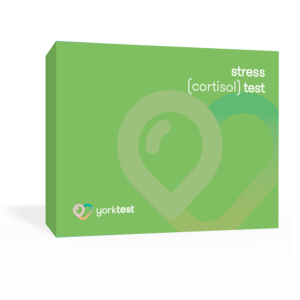- What Causes an Allergic Reaction to Christmas Trees?
- Mold Spores: The Leading Trigger
- Pollen Contamination
- Tree Sap Components
- Environmental Accumulations
- Artificial Tree Concerns
- Common Symptoms of Christmas Tree Allergy
- Respiratory Symptoms
- Nasal and Sinus Issues
- Eye Irritations
- Skin Reactions
- Systemic Reactions
- Severe Reactions
- Are Certain Christmas Trees More Allergenic Than Others?
- Cross-Reactions and Related Allergies
- Pollen Food Allergy Syndrome
- Common Cross-Reactive Foods
- Seasonal Connections
- Related Respiratory Sensitivities
- How to Prevent Allergies from Christmas Trees
- Before Bringing the Tree Inside
- Timing and Placement
- Environmental Controls
- For Artificial Trees
- Personal Protection
- Additional Considerations
- Cut Christmas Tree Allergies from Your Holiday Cheer
For many people, the arrival of a Christmas tree in their home marks the beginning of an unwelcome holiday tradition: sneezing, wheezing, and itchy eyes. While these symptoms might lead someone to believe they’re allergic to Christmas trees themselves, the reality is more complex and often misunderstood.
What many individuals experience is known as “Christmas tree syndrome,” a collection of allergic reactions that aren’t typically caused by an allergy to the tree itself. Instead, these symptoms usually arise from various allergens that hitchhike their way into homes on both real and artificial trees.
A study by the Annals of Allergy, Asthma, and Immunology has shown that Christmas trees can harbor up to 50 different types of mold spores, along with dust, pollen, and other potential irritants that can trigger allergic responses. So, while the idea of having a Christmas tree allergy isn’t to be discredited, pinpointing the actual triggers may be more complex.
What Causes an Allergic Reaction to Christmas Trees?
Understanding the complex interplay of allergens associated with Christmas trees reveals why symptoms can vary significantly among individuals and why proper management requires a comprehensive approach.
Mold Spores: The Leading Trigger
When Christmas trees are brought into warm indoor environments, they create perfect conditions for mould allergy proliferation. The transition from cold outdoor temperatures to heated indoor spaces causes moisture trapped in the bark and needles to release, creating an ideal breeding ground for various mold species.
Peak mold levels typically occur within two weeks of setting up the tree, with some studies showing indoor mold counts escalating to dangerous levels, particularly in homes with poor ventilation. Common mold species found on Christmas trees include Aspergillus, Penicillium, and Cladosporium, each capable of triggering distinct allergic responses.
Pollen Contamination
Christmas trees serve as remarkable pollen collectors throughout their growth cycle. Before harvest, they accumulate multiple types of seasonal pollen:
- Late-season ragweed pollen can become deeply embedded in tree bark and needles during fall months.
- Wind-borne tree pollen from nearby species often settles in the dense branch structure.
- Grass pollen from surrounding fields adheres to the sticky sap on branches
- Mountain cedar pollen, particularly problematic in certain regions, can collect on trees during transport.
- These accumulated pollen can remain viable for months and become airborne when the tree is disturbed during decoration or from heating system airflow.
Tree Sap Components
The complex chemistry of tree sap presents multiple potential triggers for sensitive individuals:
- Terpenes, the compounds responsible for that characteristic pine scent, can irritate airways and trigger asthma symptoms in susceptible people.
- Colophony (rosin) contains allergenic compounds that may cause both immediate and delayed allergic responses.
- Pine resins contain various volatile organic compounds (VOCs) that can trigger respiratory issues.
- Beta-pinene and alpha-pinene, specific terpenes found in pine sap, can cause heightened reactions in individuals with multiple chemical sensitivities.
- Direct contact with sap can lead to contact dermatitis, presenting as red, itchy, or blistered skin.
Environmental Accumulations
Trees act as natural filters, collecting various environmental elements:
- Microscopic dust mites thrive in both real and artificial trees, feeding on organic matter and multiplying rapidly in indoor conditions.
- Agricultural chemicals, including pesticides and fertilizers used in tree farming, can leave residual compounds.
- Airborne particulate matter from pollution can become trapped in the dense needle structure.
- Bacterial growth can occur in stagnant tree stand water, releasing potentially allergenic compounds.
- Animal dander and insects may nest in trees during storage or transport
Artificial Tree Concerns
Modern artificial trees introduce their own set of potential allergens:
- Polyvinyl chloride (PVC), a common material in artificial trees, can release volatile organic compounds.
- Flame retardants and other chemical treatments may off-gas, particularly when trees are new or stored in warm conditions.
- Dust accumulation during storage can be more problematic than with real trees due to static electricity.
- Storage conditions often promote mold growth, especially in humid environments or non-climate-controlled spaces.
- Manufacturing residues may include industrial chemicals that can cause sensitivity reactions.
This complex mixture of potential triggers explains why symptoms can vary significantly from person to person and why some individuals may react differently to real versus artificial trees.
Common Symptoms of Christmas Tree Allergy
The manifestation of Christmas tree allergy symptoms typically begins within 24 hours of exposure, though some individuals may not experience symptoms for several days. These symptoms can range widely from low-level irritation to severe reactions requiring medical attention.
Respiratory Symptoms
The most common manifestations affect the respiratory system:
- Persistent sneezing and coughing that worsens when near the tree
- Wheezing or difficulty breathing, particularly concerning for those with asthma
- Chest tightness that may feel like pressure or constriction
- Shortness of breath, especially during physical activity near the tree
Nasal and Sinus Issues
These symptoms often mimic a cold but are directly related to allergen exposure:
- Chronic nasal congestion that may alternate between nostrils
- Runny nose with clear discharge
- Sinus pressure and associated headaches
- Post-nasal drip leading to throat clearing and coughing
Eye Irritations
Ocular symptoms can be particularly bothersome:
- Watery, itchy eyes that may become red and irritated
- Dark circles or bags under the eyes, known as “allergic shiners”
- Swollen eyelids
- Burning sensation in the eyes
Skin Reactions
Contact with the tree or exposure to airborne allergens can cause:
- Contact dermatitis from tree sap, appearing as red, itchy patches
- Hives or welts on exposed skin
- General skin irritation and rashes
- Itching that worsens with direct contact
Systemic Reactions
Some people experience broader symptoms:
- Fatigue and general malaise
- Difficulty sleeping due to respiratory discomfort
- Headaches, particularly frontal head pain
- Decreased concentration and irritability
Severe Reactions
In rare cases, more serious symptoms may develop:
- Severe asthma attacks requiring immediate medical attention
- Difficulty swallowing
- Significant throat irritation
- Extreme shortness of breath
These symptoms typically worsen the longer the Christmas tree remains in the home, with peak reactions often occurring about two weeks after the tree is brought indoors. It’s important to note that symptoms can vary widely between individuals, and some people may experience only a few or many of these manifestations.
Are Certain Christmas Trees More Allergenic Than Others?
Not all Christmas trees are created equal when it comes to triggering allergic reactions. Here are the key differences in allergenicity among common Christmas tree species:
- Douglas Fir and Norway Spruce tend to be among the most allergenic options due to their high terpene content and dense branch structure that easily traps mold spores and pollen.
- Fraser Fir and Balsam Fir contain higher amounts of resinous sap compared to other varieties, making them more likely to cause skin reactions and respiratory irritation.
- Traditional Pine Trees typically release more pollen than other evergreen varieties and have sticky sap that can trap additional outdoor allergens.
- Concolor Fir is considered one of the more allergy-friendly options because it pollinates only in spring and produces fewer terpenes, plus it has a milder citrusy fragrance that’s less likely to cause reactions.
- Leyland Cypress stands out as one of the best choices for allergy sufferers since it produces minimal pollen and has a less resinous nature.
- Blue Spruce can be particularly problematic due to its sharp needles that can cause skin irritation even in people without typical allergies.
- Scotch Pine tends to retain its needles longer than other species, which means it can harbor mold and other allergens for an extended period indoors.
Individuals with known sensitivities should exercise caution when selecting their Christmas tree, particularly avoiding Douglas Fir, Norway Spruce, and traditional Pine varieties. For those with severe Christmas tree allergies, considering an artificial tree or opting for a Leyland Cypress might be the safest approach to enjoying holiday decorations without compromising health.
Cross-Reactions and Related Allergies
Understanding cross-reactions is crucial for those who experience Christmas tree allergies, as these sensitivities often connect to other allergic responses throughout the year.
Pollen Food Allergy Syndrome
The immune system can become confused when encountering structurally similar proteins, leading to cross-reactive allergic responses. For those with tree pollen allergies, this can manifest as oral allergy syndrome (OAS) or pollen food allergy syndrome (PFAS), causing unexpected reactions to certain foods.
Common Cross-Reactive Foods
Individuals allergic to specific tree pollen may experience reactions to corresponding foods.
Birch tree sensitivity often cross-reacts with:
- Almonds
- Hazelnuts
- Apples
- Cherries
- Carrots
- Celery
- Kiwi
- Parsley
Alder tree sensitivity commonly cross-reacts with:
- Peaches
- Pears
- Almonds
- Hazelnuts
- Celery
- Parsley
Seasonal Connections
The severity of cross-reactions often intensifies during peak pollen seasons. People who experience Christmas tree syndrome may notice their symptoms worsen during spring tree pollen season, particularly if they live in areas with high concentrations of pine, spruce, or fir trees.
Related Respiratory Sensitivities
Those with Christmas tree allergies may also experience heightened sensitivity to:
- Other evergreen plants and shrubs
- Pine-scented products and terpenes
- Mold spores in other settings
Understanding these cross-reactions can help individuals better manage their symptoms throughout the year and make informed decisions about both holiday decorations and dietary choices. For those experiencing multiple sensitivities, consulting with an allergist can help develop a comprehensive management strategy that accounts for these interconnected allergic responses.
How to Prevent Allergies from Christmas Trees
Whether you choose a real or artificial tree, there are numerous effective strategies to minimize allergic reactions during the holiday season.
Before Bringing the Tree Inside
The crucial first steps in preventing allergic reactions begin before your tree enters your home. A thorough cleaning process can significantly reduce the allergen load:
- Vigorously shake the tree outdoors to remove loose debris, pollen, and other particles
- Spray down the tree with a garden hose and allow it to dry completely in the sun
- Use an air compressor to blow off remaining debris, which avoids the need for drying time
- For severe sensitivities, consider using a mixture of water and a small amount of bleach (1:20 ratio) to kill mold spores
Timing and Placement
Strategic decisions about when to set up your tree and where to place it can dramatically impact allergen exposure:
- Minimize indoor exposure by waiting until a few days before Christmas to bring in the tree
- Remove the tree within 1-2 days after Christmas to prevent mold buildup
- Place the tree in a well-ventilated area away from heating vents
- Consider setting up the tree outdoors and enjoying it through a window if reactions are severe
Environmental Controls
Managing your indoor environment is essential for reducing allergen exposure and maintaining good air quality:
- Use a high-quality air purifier in the room with the tree
- Maintain optimal indoor humidity levels to prevent mold growth
- Clean the area around the tree frequently to remove fallen needles and debris
- Avoid using scented sprays or artificial pine fragrances that can compound irritation
For Artificial Trees
While artificial trees can be a good alternative, proper maintenance and storage are crucial to prevent allergen accumulation:
- Store in airtight containers in climate-controlled areas
- Clean thoroughly before assembly using a damp cloth
- Vacuum artificial branches before decorating
- Avoid storing in damp areas like basements or garages where mold can develop
Personal Protection
Taking personal precautions during tree handling and decoration can significantly reduce direct exposure to allergens:
- Wear long sleeves and gloves when handling the tree
- Consider wearing a mask while decorating
- Have someone less sensitive to allergens handle the initial setup
- Clean or replace decorations that may harbor dust or mold
Additional Considerations
Several other important factors can help minimize allergic reactions throughout the holiday season:
- Choose a Leyland Cypress or other low-allergen tree variety if using a real tree
- Keep pets away from the tree to prevent additional dander accumulation
- Consider using LED lights, which collect less dust than traditional bulbs
- Monitor symptoms and remove the Christmas tree immediately if allergic reactions become severe
By implementing these preventive measures, most people with sensitivities can enjoy a Christmas tree while minimizing allergic reactions. However, if symptoms persist or worsen, consulting with an allergist may be necessary to develop a personalized management plan.
Cut Christmas Tree Allergies from Your Holiday Cheer
Living with Christmas tree allergies doesn’t mean you have to forgo holiday traditions entirely. By understanding the complex nature of these allergies—from mold spores and terpenes to cross-reactive sensitivities—individuals can make informed decisions about their holiday decorating choices and implement effective prevention strategies that work for their specific situation.
Whether opting for a hypoallergenic tree variety, choosing an artificial alternative, or embracing creative tree-free decorating solutions, the key is to prioritize your health while maintaining the joy of the season. With proper preparation, environmental controls, and medical guidance when needed, most people can find a balance between managing their allergies and celebrating the holiday season in a way that works for them.













